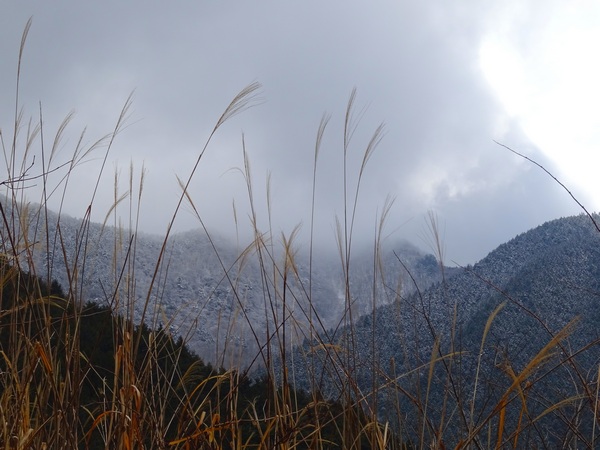
It’s April, but there was a bit of rain yesterday, and the temperatures have been unusually low, so when we decided to head off this morning for a hike up Aozasayama, we thought we might run into a bit of snow.
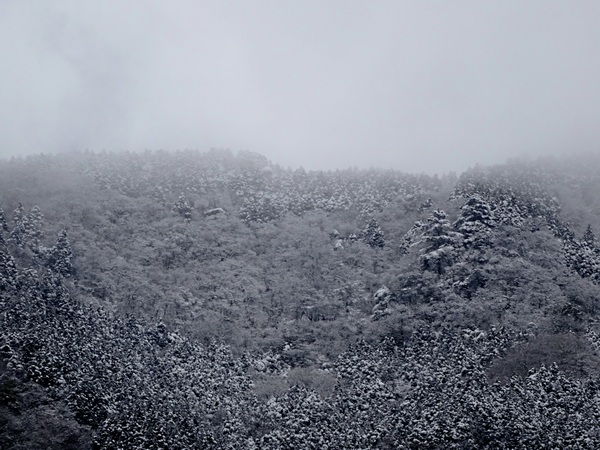
A bit. Boy, were we wrong!
When you see this much snow from a distance (above), you know it’s going to be deep on the trail. We should have remembered what we did yesterday. An English study group asked me to facilitate a discussion on Lafcadio Hearn’s short folk tale, “The Snow Woman.”
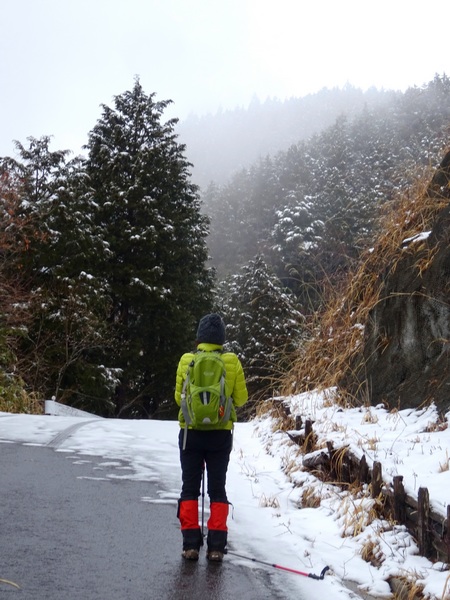
Do you know the story? Two woodcutters, on a bitterly cold winter day, take refuge in an old hut. In the middle of the night, the snow woman comes and breathes on the older one, killing him. Upon the younger one, though, she takes pity—for he’s “pretty”—and she spares his life.
I don’t think you have to read any more to conclude that the forces of nature can be capricious and cruel.
The young woodcutter promises the snow woman never to speak of the experience.

Back to our hike: The jizo, as always, welcomed us to the neighborhood. Keep the jizo in mind as you climb, and you can be assured of your safety, no matter how severe your physical situation becomes.
Back to the snow woman: A year later, the young woodcutter meets a demure young lady (with pale, snow-like skin . . . Hearn certainly doesn’t want you to get confused!), and before you know it, they’re married with ten children. Ten! How lovely and peaceful those years were.
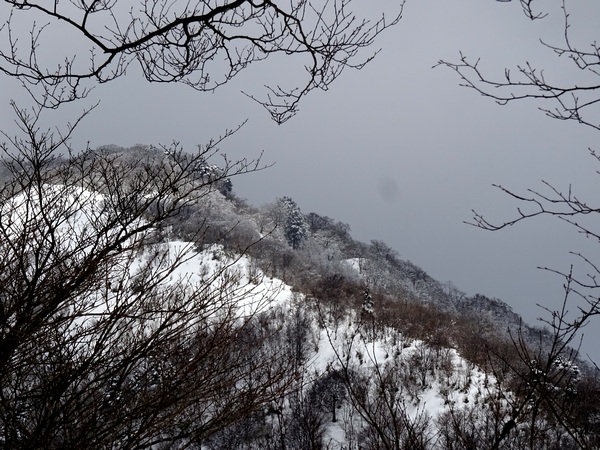 But one day, the once-upon-a-time young woodcutter suddenly remembers the night his co-worker, the old man, died. He tells his wife, the mother of his ten children, about it.
But one day, the once-upon-a-time young woodcutter suddenly remembers the night his co-worker, the old man, died. He tells his wife, the mother of his ten children, about it.
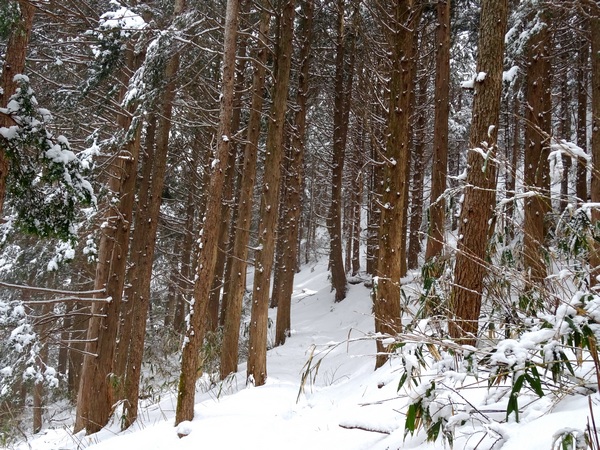
She flies into a rage. She reveals her true identity. He’s broken his promise and must pay the price. He must die. Only she loves her ten children—and without him they will not be able to eat. So she spares him—again—and she “melt[s] into a bright white mist that spired to the roof-beams, and shudder[s] away through the smoke-hole.”
 Which leaves me with a whooooooole lot of questions, but it does explain why the trail up Aozasayama was knee-deep . . . and then hip-deep. It was the Snow Woman—she knew we’d been talking about her, knew it was a good time to make her presence felt.
Which leaves me with a whooooooole lot of questions, but it does explain why the trail up Aozasayama was knee-deep . . . and then hip-deep. It was the Snow Woman—she knew we’d been talking about her, knew it was a good time to make her presence felt.
For sure, nature can be capricious and cruel. And if you don’t respect her, you can get yourself in a whole lot of trouble. So if you hike in the snow, make sure you keep your legs and feet dry. If you’re wondering how safe it is to go on, go back.
Most of the time, though, nature just wants to be your Best Friend Forever. To nurture you, and to give you great joy.
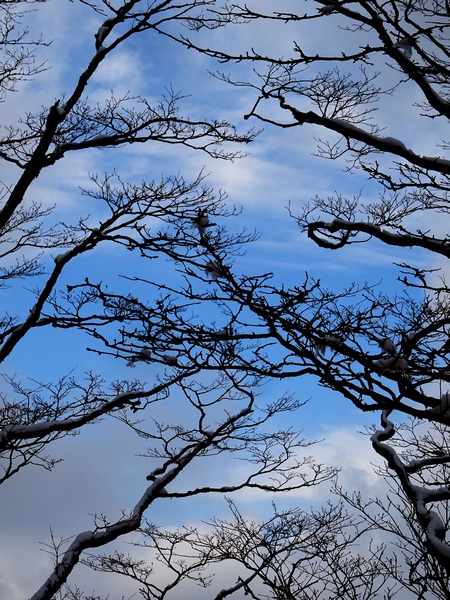
I love the patterns of the branches above. How they seem to be reaching into the white and blue, stirring it up. But you don’t have to search for ages to find branches that are playing with the sky like this. They know to grow like that. They are light eaters—and they know how to share.
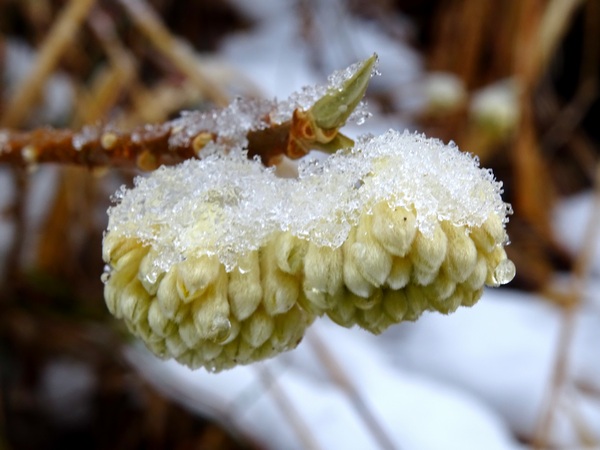
These budding flowers are hanging down from a mitsumata bush, the bark of which was (is still???) used to make paper.

The jizo atop the ridge understands nature and the capricious snow woman very well. That’s why he’s built himself this nifty hut. Keeps him dry—and keeps you safe. If you’re in the neighborhood toss him a couple of coins. It’ll be money well spent.
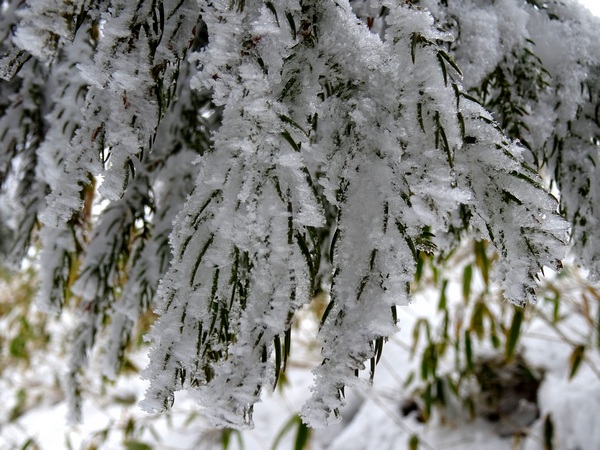
Some hikers may wonder who reigns on the mountain, the snow woman or the jizo, but actually, the answer depends on each hiker’s mindset. Just as the trees channel the energy all about, so do you. Which energy do you channel most, fear of the snow woman, or gratitude to the jizo? The answer to that question may influence what energy you believe this tree . . .
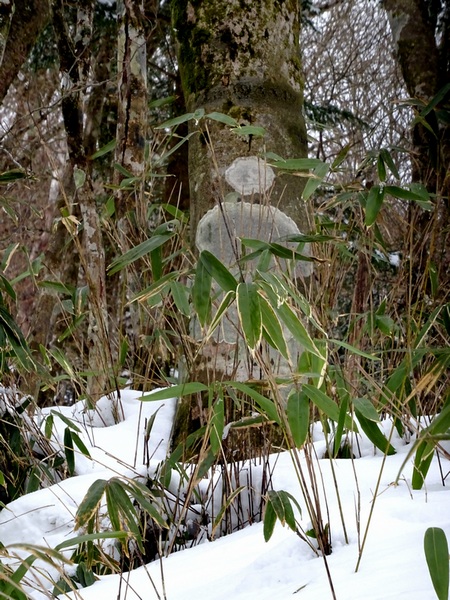
. . . is channeling. 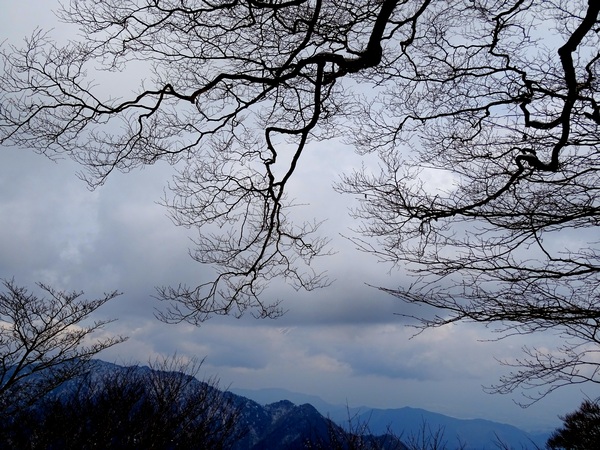
Finally, we made it to our favorite Fuji viewing spot. It took us three times as long as it usually does to get here. We were only a third of the way to our destination—the top of Aozasa.
We decided that it was a good time to call it a day. Our feet were still dry . . . more or less.
In the above picture, you may think there is no Mt. Fuji, but if you are eagle-eyed and look closely, you will see a tiny bit of our dear friend.
LOOOOOOOOOOOOOOOOOOOOK!
Okay, I’ll give you a hint. Follow the most vertical branch down to its twigs. Look just to the right of—and a bit below—the twig on the right.

So much beauty. The trees know how much can be done with water and light (okay, and a few minerals), and so should we.
Turn these wet cedar needles upside-down . . .
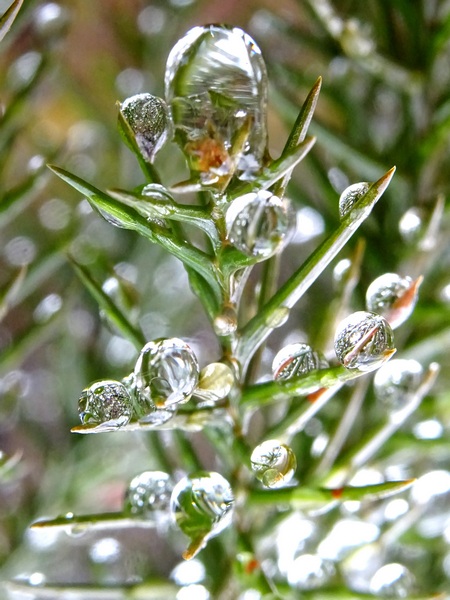
. . . and you might just see a Christmas tree, nicely decorated, shining bright.
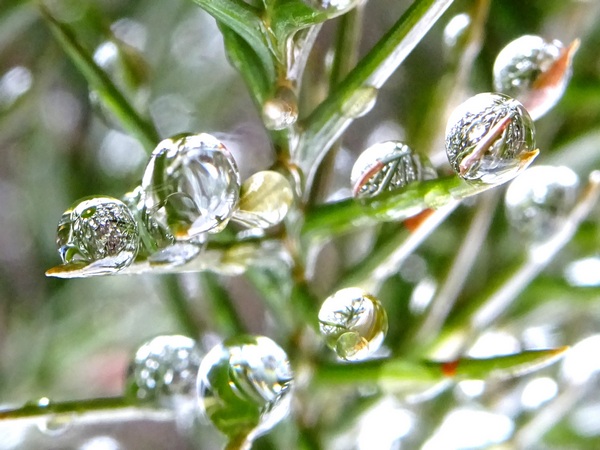
I, for one, think it’s lovely.
Thanks, guys, everyone in the Saturday study group. Your thoughts on “The Snow Woman” were insightful and thought-provoking. I feel so happy to be able to hang out with such inspiring folks.
Thank you, thank you.
No, no, that’s not the snow woman flying into the upper right corner of the pic below. That’s the sun. That’s the light that enables you to see.
